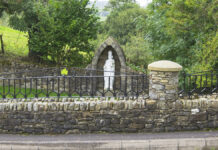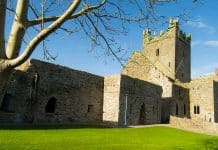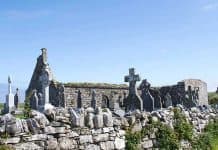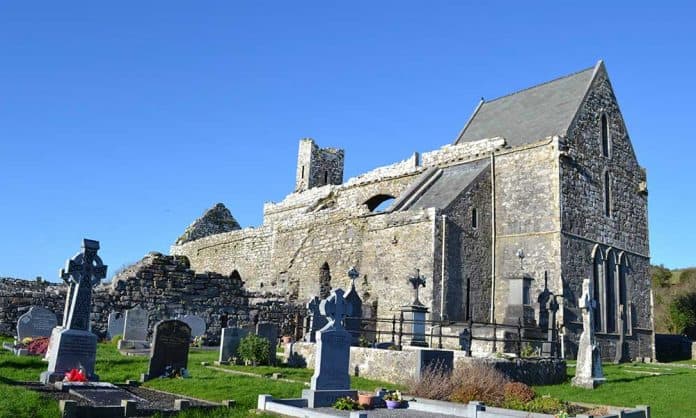
Corcomroe Abbey is a wonderful example of a quintessentially Irish monastery that was once lived in by Cistercians (also known as Trappist) monks.
These impressive medieval ruins are picturesquely located in a valley in the midst of the strangely atmospheric karst limestone landscape. This is characteristic of County Clare’s famous ‘Burren’ area.
Exploring this site is a great way to learn more about the fascinating architectural history of this gorgeous part of Ireland.
Early History of Corcomroe Abbey
A group of Cistercians from County Tipperary arrived in the area at some point in the latter half of the 12th century.
Corcomroe Abbey may have been founded at any point between 1180 and 1210 and was built using local limestone.
The early architectural history of the Abbey and its resident Trappist monks is shrouded in the mists of time.
It is thought that it was built following orders from either the ancient King of Munster, Domhnall Mór O’Brien, who is known to have commissioned a number of similar structures in this region, or one of his descendants.
Many of these churches and abbeys still remain today, albeit as medieval ruins.
What we do know is that Domhnall was a powerful Cistercian patron and that he was the most powerful and influential king in this part of Ireland at that time.
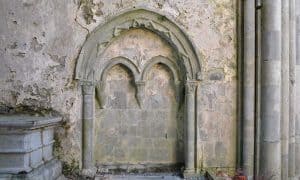
‘The School of the West’
During an eventful career that lasted around thirty years, Domhnall created and broke a succession of alliances with various influential figures, including key Anglo-Normans and many of the provincial kings of the region.
He enjoyed a somewhat fractious relationship with fellow king Ruairí O’Conor, though both shared an appreciation for the Romanesque style of architecture, typified at that time by abbeys built at least in part by the master craftsmen from the famous ‘School of the West’.
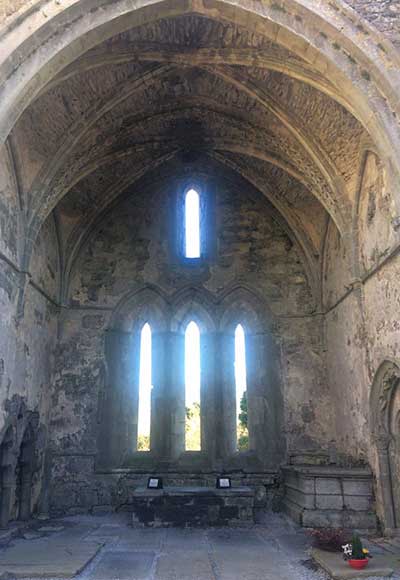
Legend and Landmark
Legend tells that once Corcomroe Abbey was complete, five of the masons who had laboured to construct it were deliberately killed immediately afterwards to prevent them creating any future architectural triumphs that might potentially outshine the monastery.
This is unlikely to have happened in reality, though, as there are similar abbeys dotted around the area, all of which share the elaborately decorative style so associated with the School of the West.
The eastern parts of Corcomroe Abbey buildings comprise a vaulted chancel and fine carvings which certainly bear the hallmark of the School.
Built on a grand scale, with a gatehouse, abbot’s house, church and hospital, it seems clear that the monastery would been a notable landmark within the Burren during medieval times.
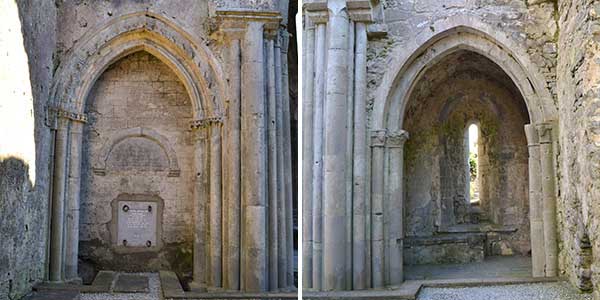
Fertile Land
The monastery is set on very fertile land (it was once known as ‘St. Mary’s of the Fertile Stone’).
We can glean from the evidence of the surrounding landscape and the remaining buildings that this was a busy and productive place.
Indeed, the Burren area is rich in artefacts from across the centuries that suggest that the region was well populated for hundreds of years.
The Cistercians were renowned for their farming talents, and today it is still possible to see evidence of this when looking at the fields that lie all around the monastery and the way they are structured.
Stunning Architecture
It seems likely that that, because of either a lack of funds or the ravages of famine, the Abbey was never fully completed to its original design.
That being said, the building is packed with stunning architectural features and beautiful carvings.
The presbytery is almost certainly one of the finest examples of the architecture of its time. The space is highly refined, comprising an elegant ribbed vault and impressive lancet window.
The elaborate sedilia is finished with delicate moulded details.
The capitals boast carvings of highly realistic depictions of plants and flowers, including poppies, lily-of-the-valley and foxgloves.
As none of these flowers is native to the area, we must assume that the monks grew them in their carefully tended gardens.
There are further highly impressive carvings of fantastical faces and animals throughout the remains of the Abbey which add to the atmosphere of this beautiful place.
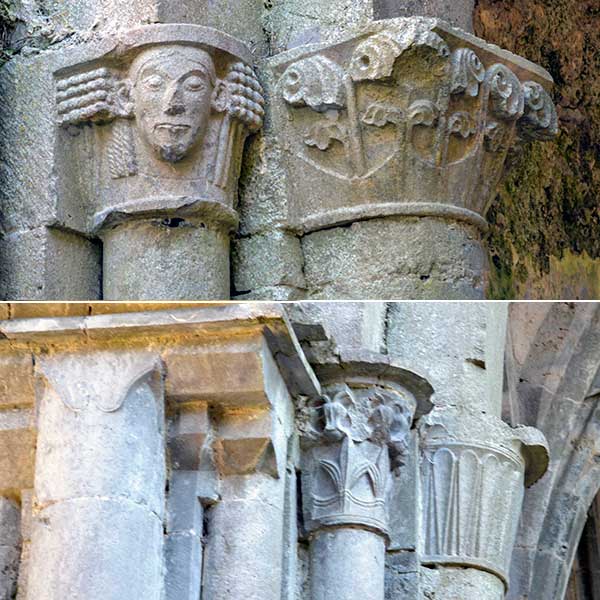
Conor’s Tomb
A tomb located along the choir’s north wall that bears the effigy of a king holding a sceptre is thought to be that of Conor na Siudaine O’Brien, the grandson of Domnhall.
He was also a Cistercian patron, thought to have been laid to rest in 1268.
One school of thought believes that it may have been Conor who founded the abbey, and that it was he who had the masons murdered after its completion. Though most experts still lean towards the theory that it was Domnhall who built it.
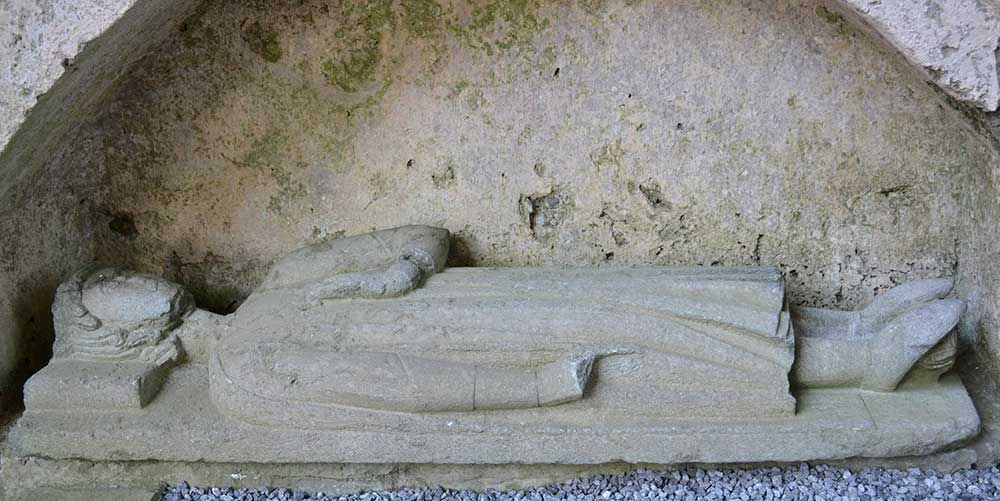
Poetic Past
Corcomroe was once home to some of the famed bardic poets of the ÓDálaigh family.
One of the poets, Cearbhall ÓDálaigh, is the protagonist of a whimsical tale called ‘The Elopement of Fearblaidhe’.
The story tells how he eloped with Eibhlin, the King of Scotland’s daughter, and how the pair were murdered by her father in the Abbey.
Legend tells that ghosts of Cearhball and his bride still haunt the site.
Interestingly, we can hear the distant echoes of this tragic love story in the lyrics of a song written by Cearbhall for his beautiful bride – ‘Eileen Aroon‘.
It’s a song which is still sung by Irish folk musicians to this day.
The Legend of Corcomroe
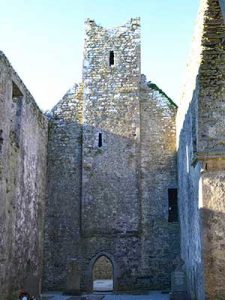
Countless battles took place in this region over the centuries, and some of the most bloody resulted from internal feuds between various factions of the O’Brien family itself.
It was one of these terrible familial squabbles that resulted in the spine-chilling ‘Legend of Corcomroe’.
The story goes that Donough O’Brien, on his way to battle, passed by Lough Rusk.
As he did so, he met a terrifying witch named Bronach Boirne, who was busy washing decapitated heads and limbs in the lake.
She prophesied that this horrifying scene reflected the forthcoming fate of Donough and his men.
Eerily, Donough is said to have seen his own decapitated head amongst the grisly contents of Lough Rusk, now entirely red with blood. He and his men tried to kill the witch, but she vanished into the air, screaming awfully as she did so.
Sure enough, Donough and his troops went on to lose the battle, and by the time the sun set that day, as Bronach Boirne had foretold, they were all dead.
Later History
By some point in the 14th century, much of the land around Corcomroe Abbey, once a beloved home to the Cistercians, was owned by the O’Cahan family.
It is not clear whether they look the land by force or legitimately bought it.
Later still, in the 15th century, the land fell under the auspices of the Tierney clan, during which time it fell into decline, resulting in the medieval ruins we see today.
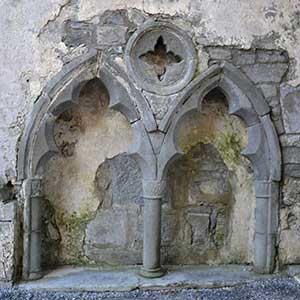
After the English Reformation and dissolution of the monasteries, Corcomroe Abbey and its land, formerly home to many Cistercians, were given to the Earl of Thomond in 1628.
The monks remained on the site for a time, tending the fields and maintaining the Abbey as best they could, but political circumstances dictated that this state of affairs could not last for long.
The last abbot on record was added in 1628. His name was Reverend John O’Dea.
The grounds would stay in the family until the 18th century, while the Abbey slowly but steadily fell ever further into ruin.
The Office of Public Works finally acquired these incomparable medieval ruins in 1879, and today they are the ideal place to find out more about the very interesting architectural history of this part of Ireland.
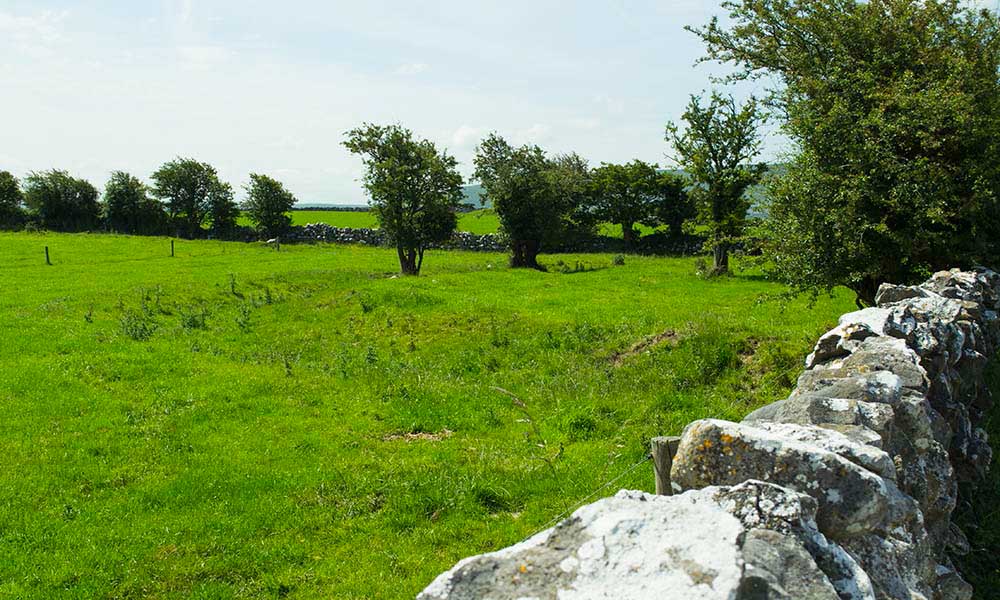
How to get to Corcomroe Abbey
From Ballyvaughan, take the N67 heading east towards Galway. After 7Km you will reach Bell Harbour.
Take a right hand turn onto the L1016 signposted for Corrofin/Ennis – there is also a sign for Corcomroe Abbey.
After approximately 200 metres down this road you will see another sign for the Abbey pointing to the lane on the left.
Turn left up this lane and you will reach the Abbey car park which is at the end of the lane.

